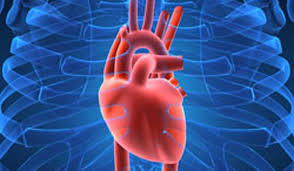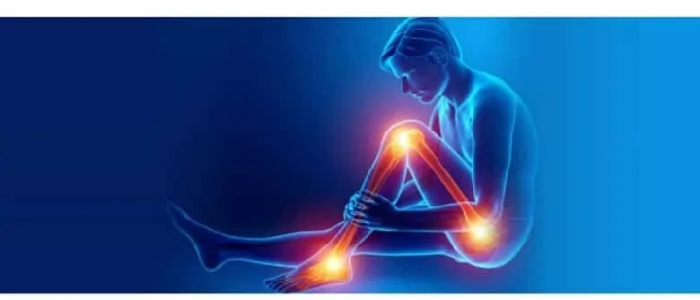An uncertain prognosis, severe shortage of resources and the imposition of unfamiliar public health measures that infringe on personal freedoms along with large and growing financial losses are undoubtedly contributing to the widespread psychological and emotional distress associated with COVID-19.
The COVID-19 pandemic has forced millions of people to work from home world-wide. Today, due to constant exposure to increasing numbers, an intense fear of contamination have a massive psychological impact on people who are working from home.
Kuhoo Gupta, Healer and Founder of The K Junction talks about wellness during work from home as the situation is resulting in people being vulnerable to severe mental illnesses. Staying positive and optimistic while working from home during pandemic can be heavily challenging.
Gupta states its critical to maintain your mental well-being and immune system, as people with mental upheavals are prone and susceptible to various flu or inflammations. Your bodies immune system reacts abnormally which diminishes the capability of it's function.
The only key to manifesting a wonderful well-being is to try and calm one's mind and focus on constructive and wellness activities, to find a path towards making ourselves more resilient while working from home. Gupta shares 5 tips you can start doing today to improve and enhance your positive outlook.
Remember! Your workplace should be a sacred space where you are able to find a sense of comfort in your work environment. It should help you feel positive, healthier and happier, more like a protective zone.
Fabricating a Positive Workstation
There should be a separate workstation so that one can concentrate while working from home. It would be great if the work desk is stationed somewhere near a window or a balcony door so that one can welcome sunlight, fresh air and a view of plants & birds during the day. Try to have an ergonomic setting of your table and chair so that you keep your posture right while working the whole day. Keeping one or two indoor plants near your work desk will help to make it interesting.
Keep your laptop charger wires and other stuff neatly on your desk to avoid overwhelming yourself. Motivation quotes around you will help to make you overall positive. Keep your notes diary and pen handy at your desk. It will always helps to keep some colorful artifacts around you to make the atmosphere a little cheerful.
Declutter Your Workstation
Avoid the pilling up files and unnecessary stationery at your workstation. Clutter is responsible for the confusion and problems all around and it leads to distraction; thus, a clean desk reflects power which enhances positivity and creates a tranquil workspace that will help your mind focus on productivity. It is important to declutter your work desk once in a few days because physical clutter translates to mental clutter.
Gratitude Notes in workstation and how to manifest
It is a great morning practice to write at least five things you are grateful for. It helps to shift the focus from negative to positive, from scarcity to abundance. One can write gratitude statements on Post it notes and put them at the work daily. This will raise the vibrations and help you stay grounded and positive. You can also compile affirmations and prayers that you resonate. Whenever you take work breaks, it is a good idea to read these.
Crystals to imbibe positivity at workstation
Selenite is a great crystal to spread light and positivity around. Black tourmaline absorbs negativity and is great to shield you from it during lockdown. Shungite is a great crystal to reduce the effects of electromagnetic radiations around you. You can place it near your wifi router, laptop and other devices to reduce the EMF pollution effects on you and your family. Clear quartz is great for energizing you after a tiring meeting. Just hold it in your left hand with eyes closed for five minutes and visualise beautiful energy entering your body and soul.
You can combine this exercise by holding black tourmaline in your right hand and visualize all the tiredness and unwanted energy draining into the black tourmaline. Tiger eye is very effective in eliminating the scattered brain and it allows us to make confident decisions. Green Aventurine neutralizes stress and anxiety from work, allowing us to keep calm.
Lepidolite is known as the Peace Stone, making it one of the best crystals for peace. It improves our overall mood, calms us, soothes us, and reduces our anxiety with a peaceful sense of happiness.
Sodalite is a great crystal for peace because it turns fear and stress into peaceful feelings. It also helps in better communication and can help while making crucial presentations & meetings.
Fluorite is great for healing and rejuvenating the mind and body. You can close your eyes and sit quietly with Fluorite while imagining your body being filled with an incredible energy that puts you at ease with yourself and the world.
Pyrite, also known as abundance stone, is great to put over your business card to manifest abundance at work.
Don't forget to clean your crystals regularly to harness their maximum energy.
Meditate, Do Pranayam and Stay Hydrated!
It is important to take short breaks to maintain productivity at work. Being summer, it is a good idea to get up for a water break once in 30 minutes at least. Even if you keep a water bottle alongside you, walking to the kitchen for water will help your physical body get some much needed movement.
Few iterations of square breathing once in two hours is a great way to boost your mind and body. Square breathing is basically the sequence of inhalation - holding breath - exhalation - holding breath - all for equal time spans. So you can count mentally 1 to 4 in inhalations, then again counting 1 to 4 as you hold your breath, and so on and so forth.
You can also chant any mantra while taking a work break for 1 or 2 minutes. While attending online meetings, where there is nothing much your hands are doing, you can utilize that time to do Yoga Hast/Hand Mudras and harness their energies. Pran Mudra is one of the best options to practice while attending meetings or reading articles, where your hands are free essentially.
You can Also -
Dress up like you would do while going to office so as to feel good in general
Go out on your terrace/balcony once or twice a day to get some fresh air, sunlight and hear birds chirping
Say yes to distractions rather than getting irritated from them, because you cannot avoid them while working from home, like the kids, TV sounds, kitchen sounds etc.
 New York, Feb 9: An Indian-origin doctor in the US has implanted the first miniature-sized, leadless cardiac pacemaker directly inside a patient's heart without surgery.
New York, Feb 9: An Indian-origin doctor in the US has implanted the first miniature-sized, leadless cardiac pacemaker directly inside a patient's heart without surgery.





Comments
Add new comment